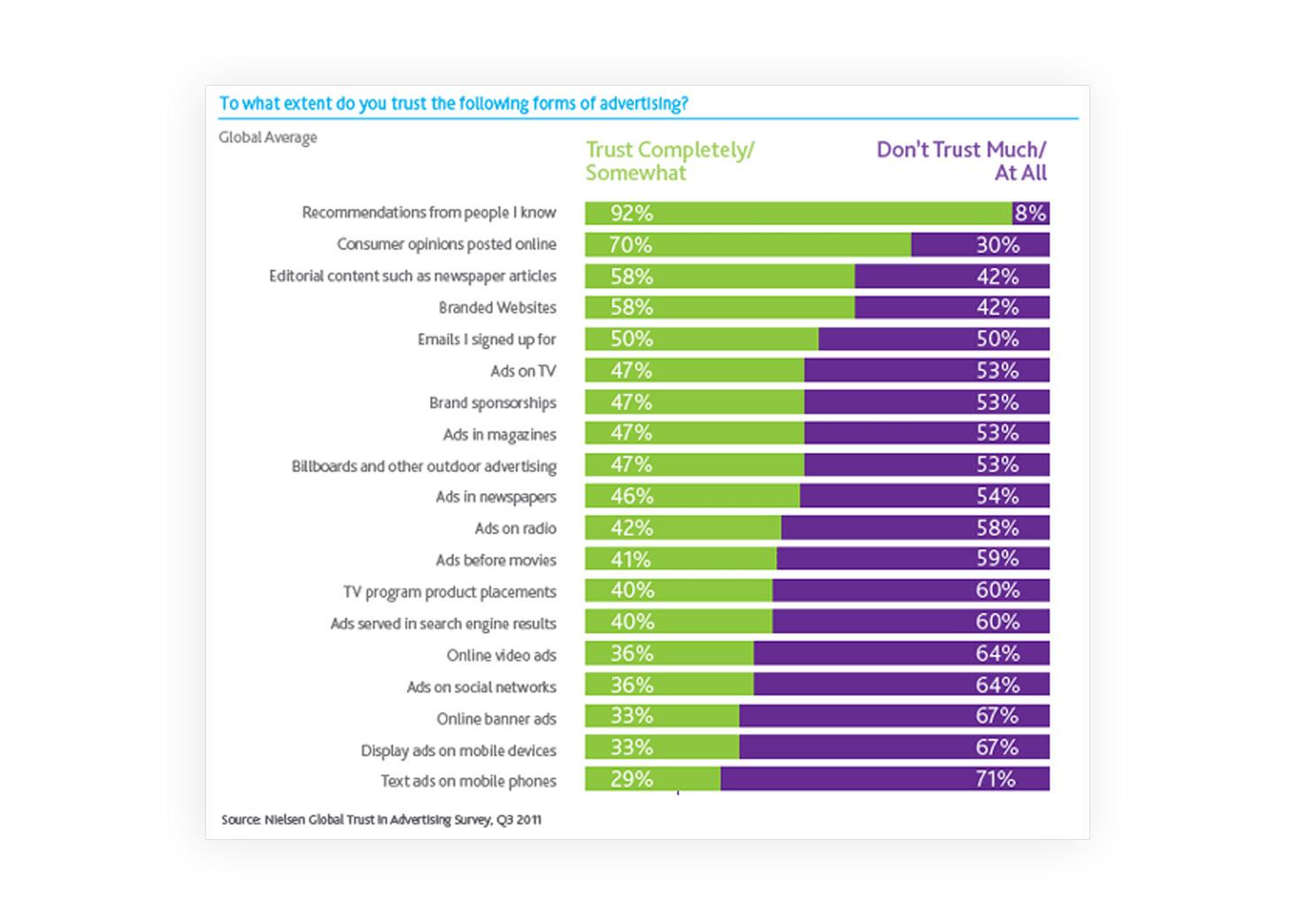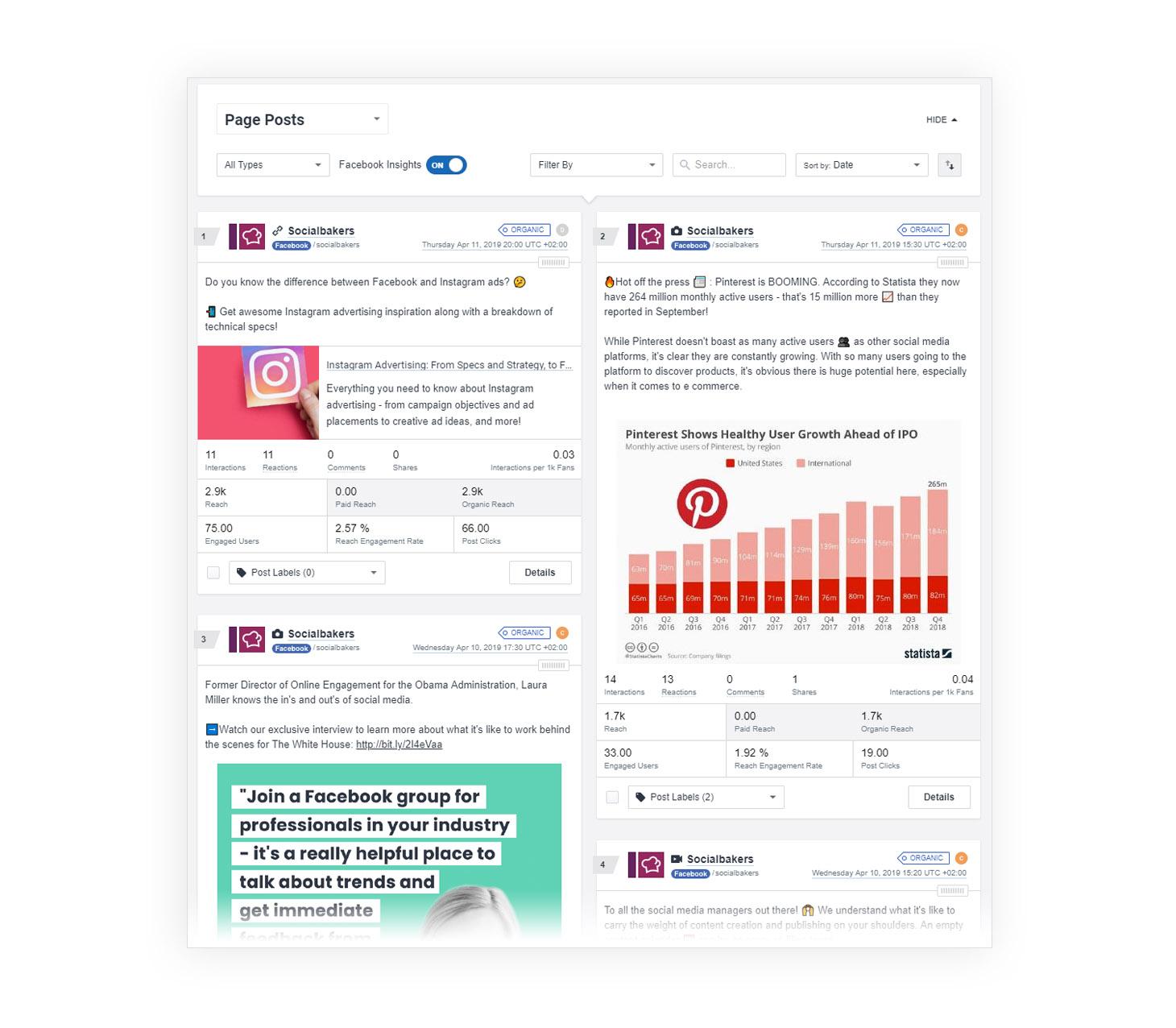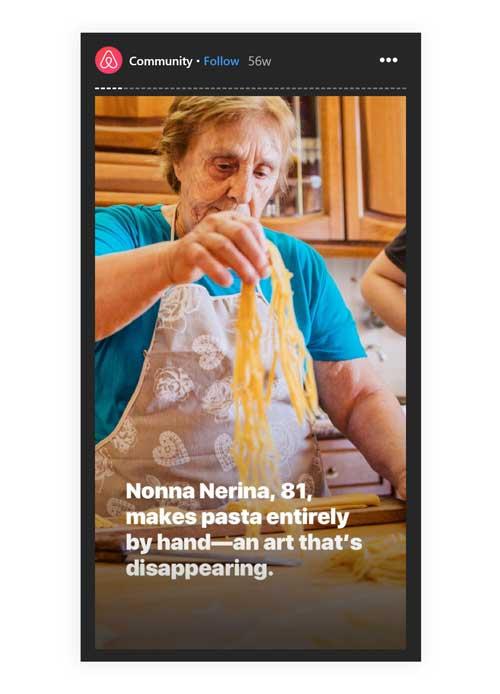The number of social media users reached 3.916 billion worldwide in 2018 based on the Global Digital Report 2018. Individuals are using social media to share their experiences with products and brands, and shoppers are increasingly turning to other user’s social media to make purchasing decisions.
As this trend grows, it’s vital for businesses to implement social media advocacy programs that will connect with their audience and encourage them to amplify the brand story.
The media and marketing landscape is undergoing a major shift.
The good old days of customers listening to your marketing pitch and responding are fading away. Today, social media is giving individuals, not brands, a virtual megaphone to tell their own stories about brands and businesses.
Word of mouth marketing has always been important, but with the rapid communication of social media, we are seeing word of mouth marketing on steroids.
Nielsen reports that 92% of consumers believe suggestions from friends and family more than advertising (see below) - a trend that is bound to grow over time.

Gen Z is one of the largest groups who is not only listening, but telling these customer-based brand stories. Retail Dive recently reported a study by Yes Lifestyle Marketing, which found that more than 80% of Gen Z and 74% of Millennials were influenced by social media when making shopping decisions.
This trend shows that shopping behavior is set to evolve as the younger generations grow older. That's why, now more than ever, it is vital for businesses of all sizes to invest time and understanding in brand advocacy.
What is social media advocacy and how can it help your business?
Social media advocacy is most simply defined as leveraging your relationships with people who are supporters of your business through social media so that they help you by sharing their enthusiasm for your company. In most cases, this includes your customers, influencers, and employees.
Some businesses feel comfortable assuming that if they have stellar content and existing superfans they don’t need a formal program for social advocacy. They believe people will organically share their content.
However, in light of the clear trend toward word-of-mouth decision-making by consumers, this may not be enough. Businesses can benefit from a hybrid approach, such as an informal program for your fans but a more formal plan for your influencers or employees.
Whether you are planning a formal or informal social media advocacy program for your business, the following strategies and tips will help you make it a success.
Design a social media advocacy strategy in line with marketing goals
Similar to any other marketing initiative, your social media advocacy plan should support your larger strategic objectives.
Is your goal to grow your followers on Facebook? Increase awareness of a new product? Reach more people on Instagram?
The more specific and concrete your goals, the more you can create a social media advocacy strategy that results in the right people sharing your news with the best content you can create.
How to create a social media advocacy program that will work for your business
The best social media advocacy programs are based on a solid knowledge of what “superfans” care about, a system to reach out and identify them, and a way to incentivize them to continue singing your praises.
We will walk through these important components and share some examples along the way.
1. Create a Persona to Understand What Your Superfans Care About
Your superfans are your social media advocates in the making. Knowing who these people are in terms of their demographics is just a starting point. You also need to know what they love, and the best way to find out is to create audience personas. What are your personas passionate about? What do they cringe at? Are they serious? Humorous? Intellectual?
Remember - you can’t provide meaningful content to your audience if you don’t know what they care about. Plus, your superfans aren’t going to share content that doesn’t resonate with them.
To understand your audience better, you have to look no further than your own social media. What posts do people respond to and comment on? What kind of posts are met with silence? Think like a detective and make a list of what’s working and what is not.

Luckily, you can easily view your engagement rate for each of your posts using Emplifi analytics. Alternatively, you can track your interactions on Facebook when you switch the dropdown menu in Facebook Insights on the top-right menu of your All Posts Published metrics.

If you don’t have an engaged audience to review, study the behavior of someone who is popular with your audience. That may be a competitor or another brand who shares the same target market as your business.
2. Don’t ignore your employees when identifying social media advocates
You probably don’t need to look any further than your employees to find a group of social media advocates. Your employees are more likely to speak on your behalf because they are personally invested in your business's success.
To make sure your employees are on board with a social media advocacy program, you need to reach out and let them know your goals and how they can support them. Is your company trying to grow awareness? Increase sales of a specific product? Increase exposure of a new marketing campaign? Whatever your objectives, describe the goal and have a system for sharing content with your employees.
As your company makes progress on reaching goals, you can share updates through email, personal meetings, and other internal communication channels.
Identify, and, most of all, appreciate employees who are helping. You might have a special incentive in place to recognize those who are garnering the most support for your business. Some companies find that it helps to gamify the experience and give actual awards for progress. However you incentivize employees, make sure you don’t lose the authenticity of their enthusiasm.

3. Build a relationship with your advocates
It’s vital to nurture the relationship you have with your advocates and show your appreciation for them. Use a monitoring system to reach out and identify who is sharing your content and thank them or tag them when they’ve shared content, participated in your groups, or engaged in your live videos.

You can easily identify brand advocates using Listening in Socialbakers Suite (now Emplifi Social Marketing Cloud). Just type in a query or keyword of your choice to instantly see which influential community members have been mentioning it most frequently. From there, it's an easy step to leverage advocates' powerful voices to boost your reach, engagement, and brand awareness.
Creating a one-to-one connection with your advocates will help them feel appreciated and increase the likelihood they will stay engaged and active.
4. Reward your social media advocates in a creative way
If you are looking for ways to incentivize your advocates to share your content, consider offering rewards that they will appreciate, such as free or heavily discounted products, access to webinars or training on a skill in your industry, or even swag.
And remember to think outside the box with your swag. Look beyond the T-shirt when you plan your gifts. MailChimp garnered lots of positive attention when it decided to give away crocheted “Freddy” cat hats to 500 loyal customers. Not only was it hilarious and unique, but it seeded the opportunity for countless cat videos.
5. Give your audience a story to tell, and help them tell it
If there is nothing unique or impressive to say about your company, you will blend in with the rest of businesses out there, and people won't talk about you.
Luckily, it is possible for every business to find a way to stand out.
Here are some ways to make your content story-worthy:
Create a campaign that is humorous, useful, touches the heart, or is otherwise memorable. Your content needs to stand out and inspire your fans to share it. As you create your content, ask yourself: What is the remarkable part of this story that would make someone turn to the person standing next to them and tell it?
Include your customer in your story. Brands have been talking about themselves for years and years. Flip the funnel and tell your brand story with your customer as the hero - this way, your audience will be able to better relate to the story.
Make it easy to share your story. Whether collaborating with employees, superfans, or influencers, give them specific instructions on how to share your content. Tell them when and where you plan to post your content, and explain why the post is worth sharing.
Apple does a great job of creating a meaningful campaign, showcasing the talent of its followers, and giving them specific directions on how to participate.
With its #ShotoniPhone campaign, Apple was able to show how their phones take high-quality photos by challenging their customers to share their photos, and then featuring the best photos throughout Apple’s social media marketing.

Apple’s Instagram feed has a huge following. Not because they share slick photos of their products but because they allow their customers to shine by doing something they love: capturing beautiful, meaningful images and sharing them with the rest of the world.
6. Decide how you will measure the success of your social media advocacy program
Your social advocacy program should be something you continually watch and measure to determine success.
Decide what metrics you will track early on in your planning. Video views, reach, engagement, click-throughs, website traffic, and conversions are all metrics that you may want to measure.
Keep in mind that your program metrics should be in line with your goals, so, if your goal is to get more reach on Instagram, you won’t necessarily need to monitor traffic to your website.
Take notes of who and what is making your program most successful. Was it one influencer who shared a video or was it your team of employees sharing hundreds of posts that cumulated into a big impact?
The more you can learn from monitoring your social advocacy program, the better you can plan similar marketing programs in the future.
Social advocacy tools and tactics for connecting and allowing your audience to tell your story
There are a variety of social advocacy platforms on the market that will help you identify your ideal social media advocates and track the success of your program. When choosing a platform, you need to identify what your top needs are and what type of advocates you want to connect with.
Some tools offer an internal library of content that you can share with your employee advocates, while others focus on building an influencer relationship.
The social media tactics you employ should connect with your advocates in a personal, relatable way so they feel inspired to share your content, tell your story, and promote your business. Luckily, social media platforms are on a path to creating more opportunities for one-on-one communication.
Below are three ways to reach out to your followers and make meaningful connections:
1. Create a Facebook Group of your superfans and advocates
Facebook organic reach has plummeted, but Facebook Groups offer a way to stay in touch with individuals. By starting a group with your VIPs, you open up a meaningful dialogue. Furthermore, when people have a two-way conversation, they see you as a friend, not a business. Your interactions can help them feel like a part of your team.
For example, in preparation for Social Media Marketing World, Social Media Examiner’s annual industry conference, the events team gave their volunteers the opportunity to learn about the event by taking part in a Facebook Group. In the group, volunteers networked with each other, got behind-the-scenes updates of the event, asked questions, and interacted with the events team.
2. Share Stories on Instagram that show your personality
Instagram Stories offer a fun, down-to-earth way to connect with your audience. You can share meaningful moments from growing your business, the experience or profiles of employees who stand out, and any other real-life stories of your business that help your audience feel closer to you.
Airbnb does a great job of this in their Instagram Stories. They share stories that highlight their community with videos and images that give you a peek into people's lives around the world.
For example, one of their recent stories took the audience to a town in Italy to share the life of a grandmother who creates pasta by hand.

3. Use Live Video to Share Behind the Scenes Stories
Most social media platforms these days allow you to share some form of live video. This content format is a great means to give your followers a glimpse into your world with meaningful content.
Again, you don’t need to make your brand the center of the video. Starbucks kicked its first Live Facebook video by covering a National Voter Registration Day they participated in. Rather than showcase themselves, they highlighted a theme that resonated with its audience.
The takeaway
Here's a quick recap of what you need to know about building a powerful social media advocacy program for your business:
Design a social media advocacy strategy that is in line with marketing goals
Create an audience persona to understand what your superfans care about
Don’t overlook employees when identifying social media advocates
Build a relationship with your advocates
Reward your social media advocates in a creative way
Give your audience a story to tell, and then help them tell it
Decide how you will measure the success of your social media advocate program
Be human and authentic with your audience
Use social advocacy tactics like Facebook Live, Facebook Groups, and Instagram Stories to connect with your audience
About the Author
Christina Kettman is the author of The Social Media Cookbook: Strategic Marketing Recipes for Small Business Success, and founder of the Seattle-based social media marketing agency, Marketing Staircase. Christina helps businesses expand their branding and messaging through social media strategies, editorial planning, and digital advertising.
Christina is also an event associate at Social Media Examiner for Social Media Marketing World, the world’s largest social media conference. She is the author of the Marketing Staircase blog which offers tips on social media and digital marketing for businesses.
Follow Christina on Twitter, LinkedIn, Instagram, or Facebook.
Editor's Note: This article was originally published on socialbakers.com. Any statistics or statements included in this article were current at the time of original publication.
























